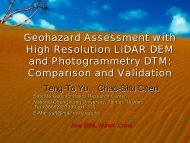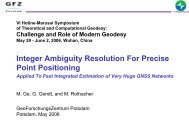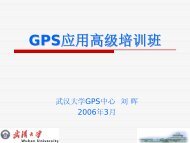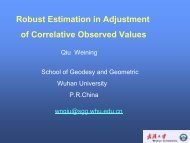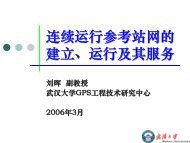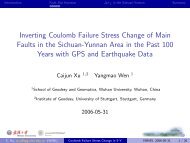(mm/yr) (mm/yr) (mm/yr)
(mm/yr) (mm/yr) (mm/yr)
(mm/yr) (mm/yr) (mm/yr)
You also want an ePaper? Increase the reach of your titles
YUMPU automatically turns print PDFs into web optimized ePapers that Google loves.
Su<strong>mm</strong>ary of the study by Alaskan group<br />
1. Large uplift rates: 30 <strong>mm</strong>/<strong>yr</strong> at the maximum.<br />
2. The observed rapid rates may not explain from the<br />
tectonic rate.<br />
3. The uplift pattern estimated from the GPS and TG data is<br />
consistent each other in general.<br />
4. A two-layer<br />
viscoelastic model (i.e. Elastic crust and Low<br />
viscosity half-space mantle) is not adequate to explain all<br />
three data sets of the GPS, TG and raised shore line.<br />
Three-layer<br />
viscoelastic earth model (i.e.<br />
Elastic<br />
lithosphere,<br />
low-viscosity<br />
athenosphere and<br />
high-<br />
viscosity lower mantle) is favorable to explain<br />
consistently all three data sets.<br />
5. For the observed viscous motion to the long-term forcing,<br />
there is a possibility that the effect of post-Little Ice Age<br />
contributes.



